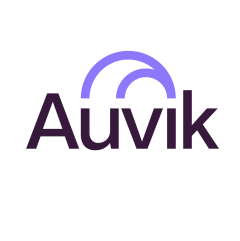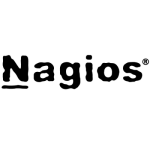What is our primary use case?
I have 21 different locations in different networks that I have to manage. It gives me the ability to see the devices on the network, to see any troubles, to diagnose and support end-users or get into the network devices that are having issues.
How has it helped my organization?
It provides a single integrated platform for everything that I need. I can go and monitor the device, and I can get into the configuration of the device. It's a very powerful tool to have. Having a single integrated platform is very important. I have many tools to use, and to me, the ability to integrate it all into one platform is essential.
Aside from having a unified dashboard, it provides the ability to pick a particular site or a group of sites and see how they are configured and what issue a particular device is having. We are able to drill into that device from this platform, and we don't have to go outside and use different tools to access and get into the device.
It's very intuitive. It's probably the best in terms of getting up and running in short order. I have a team of network professionals who work with me, and we brought them in, and within an hour or two, they had their own dashboard set the way they wanted. So overall, the whole product is intuitive and very easy. It's not difficult.
It has given us a greater amount of visibility that we didn't have before. This visibility is absolutely essential for us. Before that, we would have about four different ways to test. Having it all in one location and one platform is very essential.
What is most valuable?
The ability to have visibility on a network to see the traffic and the ability to see if devices are misconfigured and if something changes in that configuration, are most valuable.
It's very easy. It's very intuitive. They had me up and running in a matter of hours, so it wasn't a steep learning curve to learn the interface or to learn the controls.
What needs improvement?
I would like to be able to get a little bit more granularity in turning on and off alerts because I get flooded with alerts. It gives too much information at times.
For how long have I used the solution?
I've been using it for almost a year.
What do I think about the stability of the solution?
I haven't had any issues in the year that we've been on it, so it's pretty good.
What do I think about the scalability of the solution?
How are customer service and support?
I have not contacted them.
Which solution did I use previously and why did I switch?
We used a SolarWinds product. We used some rather rudimentary, built-in network tools. Obviously, there is SNMP, and we would use that through other means, but having it all essentially integrated into Auvik makes a big difference for us in terms of time and ease of use. Switching to Auvik saved us probably 20 hours a week.
How was the initial setup?
It was very straightforward. There was very little in there that did not make sense. I had a great trainer that came in, and we did maybe two or three sessions, and then we were off and running.
The name of the contractor is Darrell Norton. He works for Sedona Technologies, so we're contracted with them. We met with Darrell and then we went around installing the agents. He assisted with that. We did a lot of that remotely, and then, once the agents were installed, we started building the networks. So, in terms of me getting into the backend and programming, I did none of that.
After the collector was implemented, the network mapping started to populate
almost instantaneously. Each site took maybe 20 minutes at the most, and then it started giving us the information. It was amazing. I was pretty impressed. In terms of the full deployment, we were up and running in one or two days. We had 23 different geographic locations. They were not on one campus, so that was pretty impressive.
I can't compare the time and cost it took to set up and maintain Auvik versus our previous solutions. It was probably the easiest deployment I've seen. With the other solutions, I spent a lot of time. I had to spend an enormous amount of time doing the configurations and programming, whereas, with Auvik, it was almost a plug-and-play.
For the maintenance, including myself, there are three associates. We all spread those duties out. We don't have anybody designated as the network administrator, so it's me and two other people who spend the most time with it. It's a daily function. In the morning, I get in, and I look at it. If I don't see anything wrong, I move on. It has made our jobs a whole lot easier.
What was our ROI?
We have absolutely seen time-to-value with Auvik. Getting in there and being able to see what that network is up to at any given moment, what the issues are, and being able to address them right from that platform has been a huge time saver.
We have seen a good 15% reduction in our mean time to resolution (MTTR).
What's my experience with pricing, setup cost, and licensing?
They're very competitive on the pricing front. They may not be the least expensive, but they're certainly not the most expensive. They're right in a sweet spot. For our organization, at least, it was right within the budget.
Which other solutions did I evaluate?
We were using the SolarWinds product, and I went through demos of probably a dozen or more. We had CrowdStrike and others. I sat through probably a year's worth. I spent a year evaluating different products before we settled on Auvik.
What other advice do I have?
To those evaluating this solution, I would advise making sure that they have full control of the network, they understand all the devices, and they have the administrative capability to get into managed devices. We discovered a few that we hadn't known about, which provided a challenge. They also should be aware that there may be privacy concerns for some people because the system does take over and look into things. They may need to put controls on before they deploy it. I know that it goes in and gathers the configuration data, but I'm not sure how much personal data that is. I don't watch that part of it, but that would just be my top-of-mind concern. It's so powerful and it can take so much control. What's it looking at?
I'm very impressed with the product. I don't have any complaints. I wish I had it several years earlier. It would've been a lot easier. We've been through a number of acquisitions. So, taking on new different networks was a chore before. If we had this at the onset, it would've been a piece of cake.
We haven't yet utilized the program to its full potential. The most automation I see is getting the alerts, but we haven't yet designated tasks in that automation. So, there's still some manual work. In other words, we get the alert, and then we have to go deal with it. We don't have an automated dispatch or anything to any particular person.
I am sure Auvik is helpful for keeping device inventories up-to-date, but we use something else. We're still getting our feet wet with the product. The more we use it, I'm sure it would be valuable for that. I can go in and see all the devices that are reporting on the network, so in a sense, it does help us to keep device inventory up to date, but I'm sure there's a better way we can use it.
In terms of comparing Auvik's cloud-based solution versus on-prem network monitoring solutions, as long as I have network connectivity and I have internet, it's great, but if I'm in a situation where I don't have connectivity, it doesn't help me.
I would rate it a 10 out of 10.
Disclosure: PeerSpot contacted the reviewer to collect the review and to validate authenticity. The reviewer was referred by the vendor, but the review is not subject to editing or approval by the vendor.



















